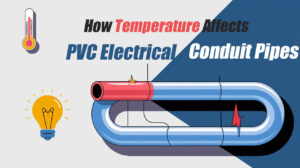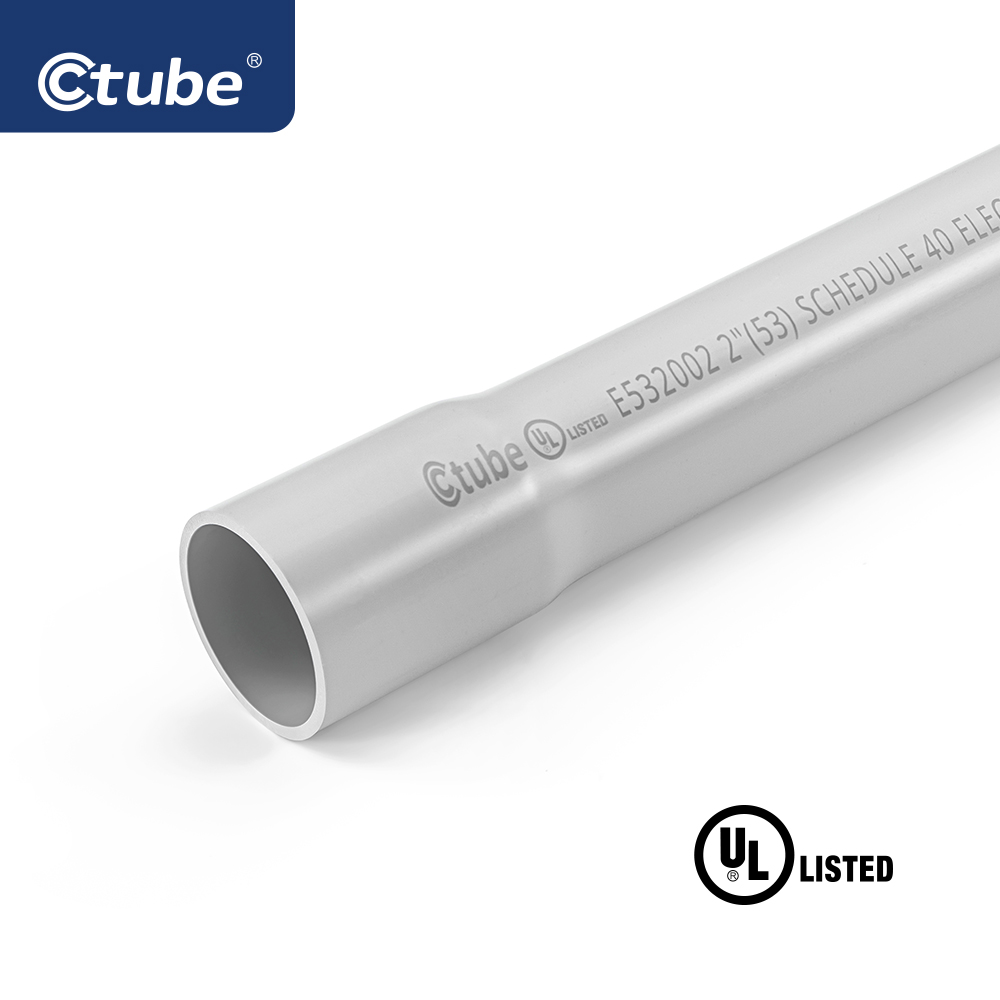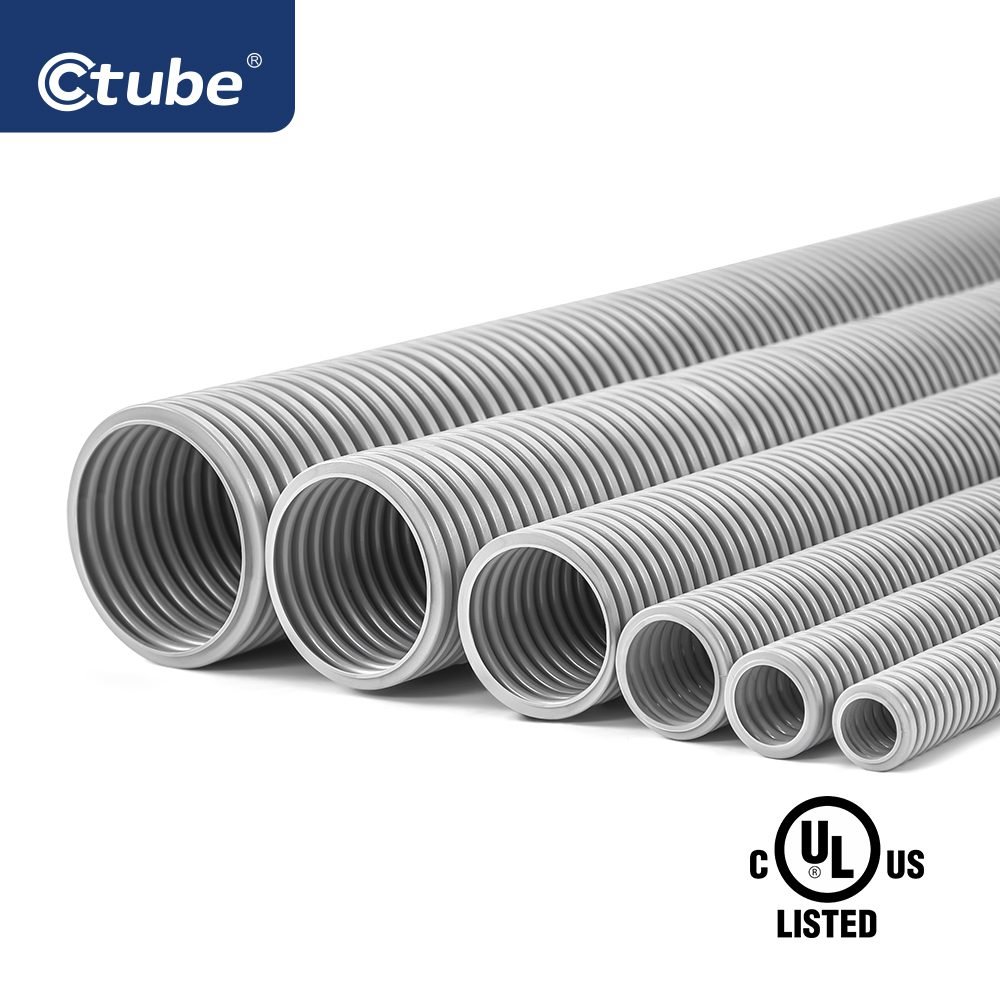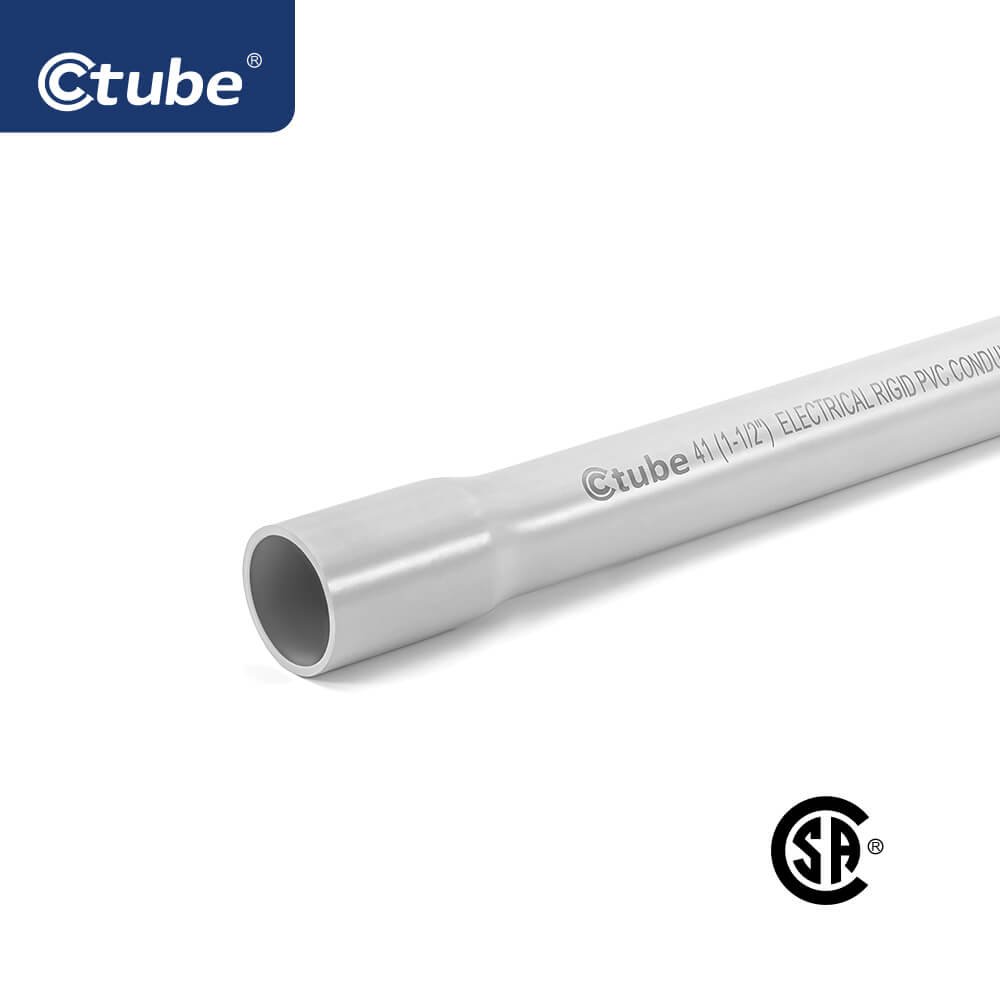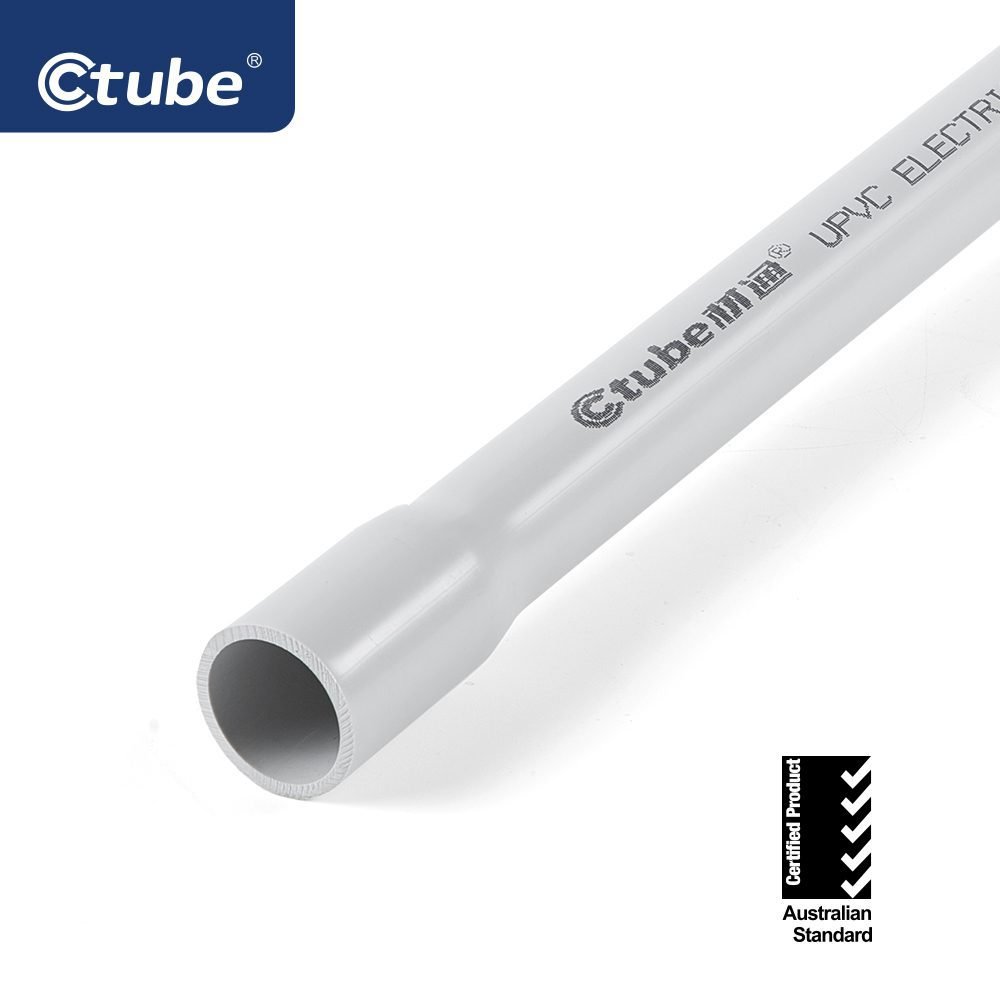Seja você um proprietário considerando painéis solares ou um empreiteiro procurando expandir sua oferta solar, entender cada componente envolvido é crucial. Muitas vezes esquecido é conduíte solar, mas esta peça simples desempenha um papel vital no roteamento seguro das conexões elétricas e na proteção do seu sistema a longo prazo.
Índice
AlternarNeste artigo, vamos nos aprofundar no mundo dos conduítes solares, explorando sua finalidade, tipos, melhores práticas de instalação e as principais considerações ao escolher o conduíte certo para seu projeto solar.
O que é Conduíte Solar?
Conduíte solar, also known as solar wiring conduit or photovoltaic (PV) conduit, refers to the protective tubing or piping used to install and route electrical wiring in solar energy systems. During the installation of a solar energy system, the engineers will plan the conduit pathway, aiming to protect the wires from potential damage. One of the key features of solar conduit is its ability to withstand exposure to outdoor environments. It is designed to resist moisture, extreme temperatures, and harsh weather conditions, providing reliable protection for the electrical wiring in solar installations. Additionally, some solar conduit may have additional features such as fire resistance and rodent protection.
Tipos de conduíte solar
Os conduítes utilizados em instalações solares são normalmente categorizados em dois tipos: rígidos e flexíveis, cada um dos quais pode ser dividido em variantes metálicas e não metálicas.
Conduíte não metálico é construído de plástico, embora seja consideravelmente mais leve. Exemplos de materiais usados incluem PVC ou polipropileno
Conduíte metálico pode ser fabricado em aço galvanizado, aço inoxidável, latão, alumínio ou latão niquelado. Alguns tipos incorporam componentes metálicos e não metálicos para fornecer recursos como baixo risco de incêndio e capacidades antiestáticas, trançamento externo e outros aprimoramentos.
Conduíte rígido, também conhecido como tubo ou tubulação, é empregado para longos percursos de conduíte e situações que exigem resistência adicional ou proteção mecânica.
Conduíte flexível é normalmente utilizado em instalações que exigem flexão ou em áreas onde é provável que ocorra vibração.
Aqui estão alguns dos tipos comuns de conduítes usados em aplicações solares:
Conduíte de PVC (cloreto de polivinila): O conduíte de PVC é uma escolha popular para instalações solares devido à sua acessibilidade, durabilidade e facilidade de instalação. É resistente à radiação UV, umidade e corrosão, tornando-o adequado para uso externo. O conduíte de PVC está disponível em vários tamanhos e pode ser rígido ou flexível, proporcionando flexibilidade no roteamento e proteção da fiação solar. ( “Saiba mais sobre eletrodutos e conexões de PVC”)
Conduíte de HDPE (polietileno de alta densidade): O conduíte HDPE é outro tipo comumente usado em aplicações solares. Ele oferece excelente resistência à exposição UV, umidade e produtos químicos, tornando-o uma escolha durável para instalações acima e abaixo do solo. O conduíte HDPE está disponível em diferentes diâmetros e pode ser fundido por calor ou unido usando conexões.
Conduíte EMT (Tubulação metálica elétrica): O conduíte EMT é feito de aço e é normalmente usado para instalações solares internas ou fechadas. Ele fornece proteção mecânica para os condutores e pode ser facilmente dobrado e instalado. No entanto, o conduíte EMT não é adequado para aplicações externas ou de enterramento direto, a menos que seja protegido contra umidade e corrosão.
Eletroduto metálico rígido (RMC): RMC é um conduíte de metal resistente, normalmente feito de aço galvanizado. Ele oferece excelente proteção mecânica e é frequentemente usado em instalações solares de larga escala, onde durabilidade e proteção adicionais são necessárias. RMC é adequado para aplicações internas e externas.
Conduíte estanque a líquidos: Conduíte estanque a líquidos, também conhecido como LFMC (Liquidtight Flexible Metal Conduit) ou LFNC (Liquidtight Flexible Nonmetallic Conduit), é uma opção de conduíte flexível usada em instalações solares onde é necessária proteção contra umidade, água ou substâncias corrosivas. Consiste em um núcleo interno flexível e uma cobertura externa que fornece resistência a líquidos e elementos ambientais.
O papel dos conduítes solares em instalações solares
Para os proprietários de imóveis, o Conduit desempenha um papel vital no design solar, facilitando a conexão e a funcionalidade adequadas de vários componentes dentro do seu sistema de energia solar. Sejam seus painéis solares, inversor, painel principal, desconexão CA, medidor elétrico ou até mesmo uma bateria (se aplicável), a maioria desses equipamentos é instalada no exterior da sua casa e requer conduíte para rotear fios e criar um sistema coeso.
Ao usar conduíte, os fios elétricos que conectam esses componentes são protegidos e organizados, garantindo uma operação segura e eficiente. O conduíte serve como um caminho de conduíte, protegendo os fios de elementos ambientais, como umidade, radiação UV e danos físicos. Essa medida de proteção ajuda a manter a integridade e a longevidade da fiação elétrica, reduzindo o risco de falhas elétricas ou mau funcionamento do sistema.
Em alguns casos, quando um sistema de energia solar se estende por várias estruturas ou quando o medidor está localizado separadamente da casa principal, o conduíte também pode ser usado para enterrar fios no subsolo. Este conduíte subterrâneo fornece um caminho seguro e oculto para os fios, prevenindo quaisquer riscos potenciais e mantendo uma aparência limpa e profissional.
Se for necessário enterrar fios no subsolo, pode envolver o agendamento de valas como parte do processo de instalação. A vala permite a criação de uma vala estreita na qual o conduíte pode ser colocado, garantindo que os fios estejam adequadamente protegidos e escondidos da vista.
Para instalações solares comerciais, os conduítes solares desempenham um papel simples, mas importante. Eles fornecem um caminho protegido para a fiação elétrica, garantindo a segurança e a organização do sistema. Os conduítes solares protegem os cabos contra danos e condições ambientais adversas, cumprem os códigos elétricos e permitem futuras expansões ou modificações. Ao manter a fiação organizada e segura, os conduítes solares contribuem para a operação eficiente e confiável das instalações solares comerciais.
Como escolher o conduíte solar correto?
Escolher o conduíte solar certo é crucial para garantir a segurança e a longevidade do seu sistema de energia solar. Aqui estão alguns fatores a serem considerados ao selecionar o conduíte apropriado:
Material: O conduíte solar está disponível em diferentes materiais, como PVC (policloreto de vinila) e metal (como alumínio ou aço galvanizado). Cada material tem suas próprias vantagens e considerações. Conduíte de PVC é leve, acessível e resistente à corrosão, tornando-o adequado para a maioria das instalações residenciais. O conduíte de metal, por outro lado, fornece maior durabilidade e proteção contra danos físicos, tornando-o ideal para aplicações comerciais ou industriais ou áreas propensas a condições climáticas extremas.
Tamanho e capacidade: Considere o tamanho e a capacidade do conduíte com base no número e tamanho dos cabos que precisam ser roteados. Certifique-se de que o conduíte tenha espaço suficiente para acomodar os cabos confortavelmente. É importante cumprir os códigos elétricos locais e os padrões da indústria em relação ao dimensionamento do conduíte e à capacidade de preenchimento para evitar superaquecimento e garantir o gerenciamento adequado dos cabos.
Fatores ambientais: Avalie as condições ambientais nas quais o conduíte será instalado. Se o conduíte for exposto à luz solar direta ou a temperaturas extremas, escolha um conduíte com resistência UV e tolerância a altas temperaturas. Além disso, considere fatores como resistência à umidade e resistência ao fogo, especialmente se o conduíte for instalado em ambientes úmidos ou perigosos.
Requisitos de instalação: Avalie os requisitos e restrições de instalação. Determine se o conduíte precisa ser flexível ou rígido com base nas necessidades do projeto. O conduíte flexível, como o conduíte flexível estanque a líquidos (LFMC), permite uma instalação mais fácil em cantos ou em áreas com espaço limitado. O conduíte rígido, por outro lado, fornece proteção e estabilidade adicionais, mas requer medições e encaixes precisos.
Conformidade e Certificação: Certifique-se de que o conduíte escolhido atenda aos padrões de conformidade e certificações necessárias, como os requisitos do National Electrical Code (NEC). Procure por conduítes rotulados com certificações relevantes, como UL listed, certificação AS/NZS 2053 para garantir a qualidade e a segurança do produto.
Orçamento e escala do projeto: Considere seu orçamento e a escala do seu projeto de instalação solar. Embora seja importante escolher um conduíte que atenda às suas necessidades, equilibre-o com a relação custo-benefício. Compare preços, garantias e o valor geral oferecido por diferentes fabricantes ou fornecedores de conduítes.
Orientação Profissional: Consulte instaladores solares experientes ou profissionais elétricos que podem fornecer consultoria especializada sob medida para seu projeto específico. Eles podem avaliar seus requisitos exclusivos, regulamentações locais e melhores práticas do setor para ajudar você a tomar uma decisão informada.
O que são conexões de conduíte solar?
Os acessórios de conduíte solar são componentes especializados que são usados em conjunto com conduítes solares para criar conexões elétricas seguras e eficientes em instalações solares. Esses acessórios são projetados para fornecer vedação, proteção e flexibilidade adequadas para o roteamento de fios elétricos dentro do sistema de conduíte solar. Eles garantem que os conduítes estejam conectados corretamente, permitem uma instalação fácil e ajudam a manter a integridade da fiação elétrica. Os tipos comuns de acessórios de conduíte solar incluem adaptadores, acoplamentos, cotovelos, caixas de junção e caixas adaptáveis. Esses acessórios são feitos de materiais resistentes a fatores ambientais, como umidade, radiação UV e temperaturas extremas, para garantir um desempenho confiável em aplicações solares externas.
Quanto tempo dura um conduíte solar?
A vida útil de um conduíte solar pode variar dependendo de vários fatores, incluindo a qualidade do conduíte, as condições de instalação e fatores ambientais. No entanto, um conduíte solar bem instalado e de alta qualidade pode durar várias décadas.
A maioria dos conduítes solares é feita de materiais duráveis, como PVC (cloreto de polivinila) ou HDPE (polietileno de alta densidade), que são conhecidos por sua resistência à radiação UV, umidade e variações de temperatura. Esses materiais são projetados especificamente para suportar as duras condições externas que as instalações solares frequentemente enfrentam.
Técnicas de instalação adequadas, como usar conexões apropriadas, prender o conduíte com segurança e garantir a vedação adequada, também podem contribuir para a longevidade do conduíte. Ao seguir as melhores práticas durante a instalação, você pode ajudar a proteger o conduíte contra danos e garantir sua funcionalidade a longo prazo.
Manutenção e inspeções regulares também são cruciais para estender a vida útil de um conduíte solar. Inspecionar o conduíte para quaisquer sinais de desgaste, danos ou deterioração e abordar quaisquer problemas prontamente pode ajudar a prevenir mais danos e garantir que o conduíte continue a funcionar efetivamente.
É importante notar que, embora o conduíte em si possa ter uma vida útil longa, a fiação elétrica e os componentes dentro do conduíte podem ter uma vida útil diferente. É recomendado seguir as diretrizes do fabricante para a vida útil de componentes específicos e conduzir inspeções regulares para garantir a integridade geral da instalação solar.
Requisitos de manutenção para um conduíte solar
Os conduítes solares normalmente exigem manutenção mínima, mas ainda é importante realizar inspeções de rotina para garantir seu funcionamento adequado e longevidade. Aqui estão alguns requisitos de manutenção para um conduíte solar:
Inspeções visuais: Inspecione regularmente o conduíte solar para verificar se há sinais visíveis de danos, desgaste ou deterioração. Procure por rachaduras, quebras ou encaixes soltos que possam comprometer a integridade do conduíte. Preste atenção às conexões, juntas e pontos de entrada para garantir que estejam seguros e devidamente selados.
Limpeza de entulhos: Remova quaisquer detritos, folhas ou vegetação que possam se acumular ao redor ou dentro do conduíte. Os detritos podem obstruir o caminho do conduíte, impedir o fluxo de ar adequado e potencialmente causar danos à fiação elétrica. Limpar a área ao redor do conduíte pode ajudar a manter o desempenho ideal.
Proteção contra danos físicos: Certifique-se de que o conduíte solar esteja adequadamente protegido contra danos físicos. Evite colocar objetos pesados ou exercer pressão excessiva sobre o conduíte, pois isso pode levar a amassados, dobras ou outros problemas estruturais. Proteja o conduíte de impactos potenciais ou danos acidentais durante atividades de manutenção ou paisagismo.
Integridade do selo: Verifique as vedações e juntas dos encaixes do conduíte para garantir que estejam intactos e forneçam proteção adequada contra entrada de umidade e poeira. Substitua quaisquer vedações danificadas ou deterioradas para manter a integridade do conduíte e evitar danos potenciais causados pela água ou pelo ambiente à fiação elétrica.
Conformidade com códigos e padrões: Revise regularmente e garanta que a instalação do conduíte solar esteja em conformidade com os códigos e padrões elétricos aplicáveis. Mantenha-se atualizado com quaisquer alterações ou atualizações dos regulamentos para garantir conformidade e segurança contínuas.
Inspeções profissionais: Considere agendar inspeções periódicas por um eletricista licenciado ou um profissional com experiência em instalações solares. Eles podem avaliar a condição geral do conduíte, executar verificações mais detalhadas e abordar quaisquer problemas ou preocupações potenciais.
O conduíte solar pode parecer um pequeno componente em um sistema de energia solar maior, mas seu papel em garantir a segurança elétrica e proteger a fiação não pode ser subestimado. Ao entender o propósito, os tipos e as melhores práticas de instalação do conduíte solar, você pode tomar decisões informadas para seu projeto solar. Lembre-se de considerar fatores como durabilidade, resistência às intempéries e conformidade com os códigos elétricos ao selecionar o conduíte certo. Com instalação e manutenção adequadas, o conduíte solar contribuirá para a longevidade e eficiência do seu sistema de energia solar, permitindo que você aproveite energia limpa e sustentável por muitos anos.






